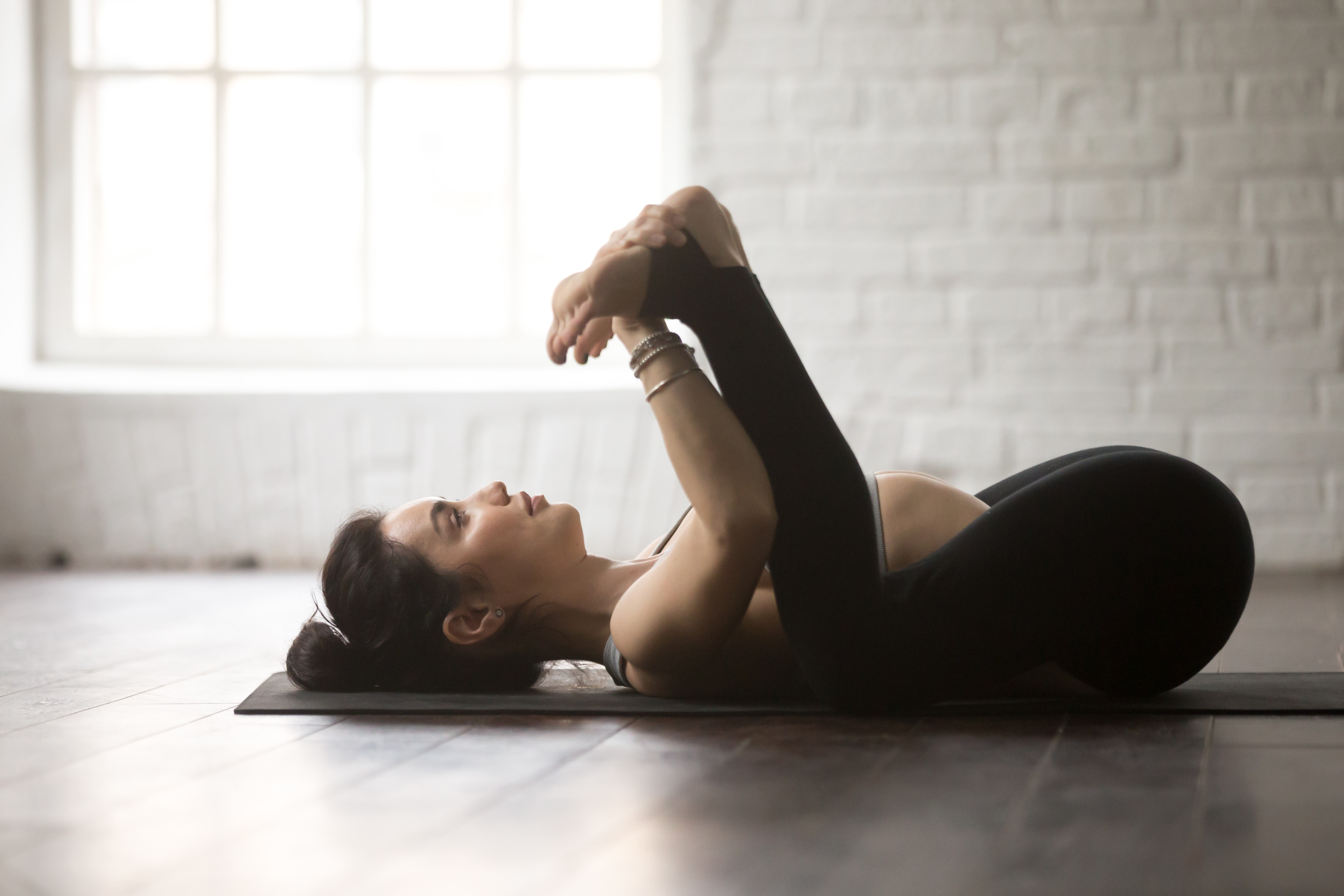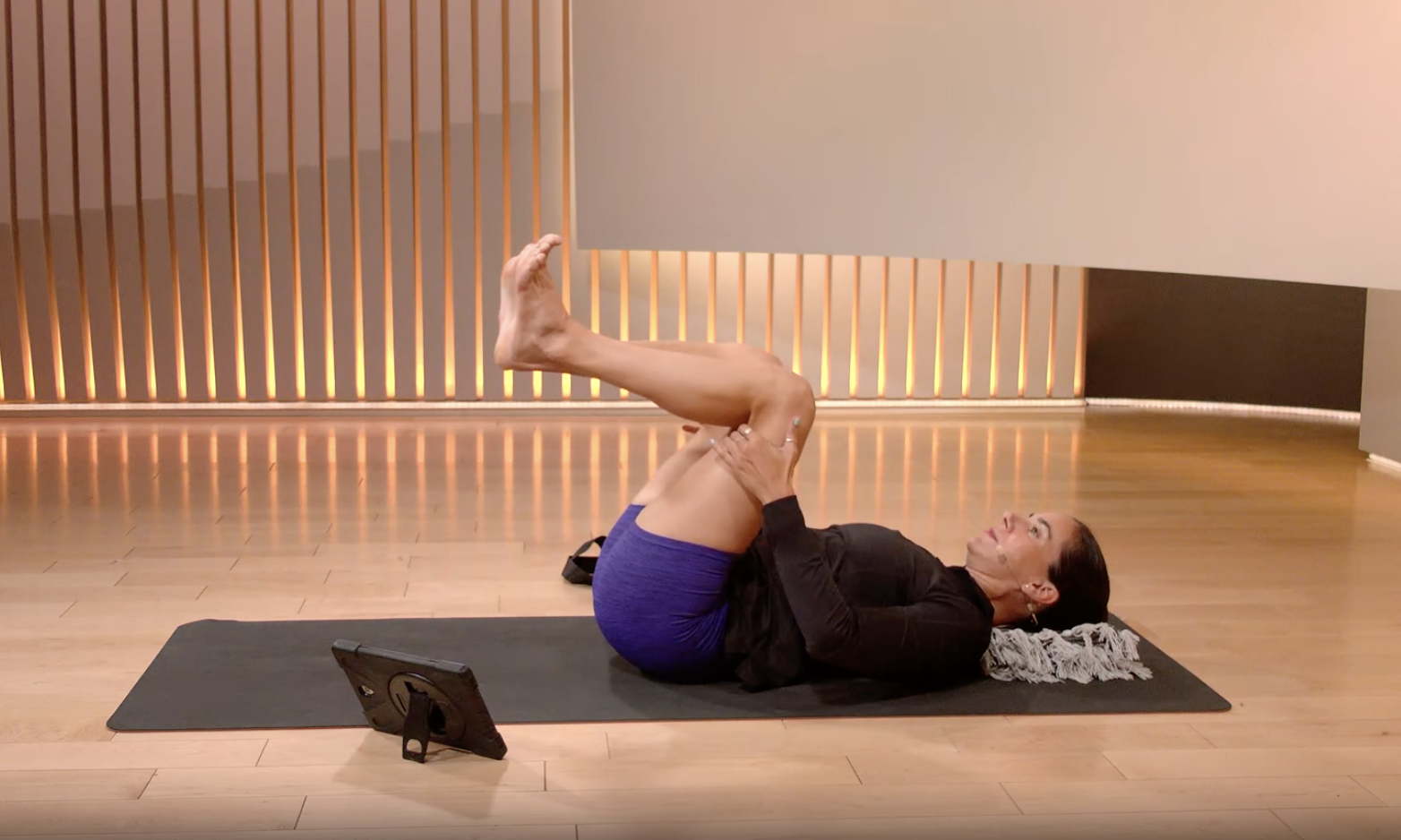
fizkes/Getty Images
How to Do Happy Baby Pose, According to a Peloton Instructor
This floor-based posture appears in yoga classes of all levels. Here's why.
By Ingrid Yang•
Benefits of Happy Baby Pose (Ananda Balasana)
How to Do Happy Baby Pose
Common Mistakes to Avoid
Top Tips for Practicing Happy Baby Pose
Happy Baby Pose Variations
The Takeaway
When’s the last time you experienced unbridled, childlike playfulness? If you can’t remember, it’s probably time to take Happy Baby Pose, a floor posture known as Ananda Balasana in Sanskrit. Part stretch, part strength challenge, part relaxation pose, this yoga asana resembles a position many babies take on their backs and encourages you—regardless of your age—to let loose and play.
Here, we get into the nitty gritty of Happy Baby Pose, discussing its many benefits, step-by-step instructions on how to do it, common mistakes to avoid, and more.
Benefits of Happy Baby Pose (Ananda Balasana)
Happy Baby Pose is a gentle yet effective yoga posture that stretches, strengthens, and relaxes various areas of your body. “It’s a floor pose and Supine Forward Fold as well as a hip opener,” Peloton instructor Nico Sarani says. Here are some of the main physical benefits of Happy Baby Pose.
Decompresses your sacroiliac (SI) joints, which sit between your pelvis and lower back
Opens your hips
Releases tension from your spine and sacrum, a triangular bone that connects your spine and pelvis
Stretches your pelvic floor, hamstrings, and inner groins
Strengthens your shoulder girdle, which includes your shoulder blade and collarbone
Happy Baby Pose also allows you to calm your mind and reduce stress levels. Because of its gentle nature, instructors typically cue it at the beginning of class to warm you up or at the end of class to wind you down.
And if you’re taking a more intense flow that incorporates active postures such as Warrior 2 (Virabhadrasana 2) or Chair Pose (Utkatasana), Happy Baby Pose can act as a counterbalance, helping you form a well-rounded routine.

Peloton App
Access thousands of classes with no equipment needed.
How to Do Happy Baby Pose
Below, find step-by-step instructions on how to practice Happy Baby Pose the next time you step onto your mat.

Lie flat on your back on a comfortable surface (we recommend a yoga mat, but the floor is OK too). Gently exhale and bring your knees toward your chest.
Open your knees slightly wider than your torso and gently bring them up toward your armpits. Keep your lower back pressed to the ground.
Position each ankle directly over each corresponding knee and make sure your shins are perpendicular to the floor. Flex your feet to engage your leg muscles.
Extend your arms alongside your inner thighs and grab the outer edges of your feet. If you can’t reach them, wrap a yoga strap around each foot. Nico points out that you can also reach for your big toes with your index and middle fingers. Once you have a hold of your feet, gently push them into your hands (or your yoga strap) while simultaneously pulling down with your hands to create counterpressure.
Bring the soles of your feet up so they face the ceiling while keeping your knees bent. Each leg should form a right angle.
While you hold this position, ensure your tailbone and spine remain on the floor. Don’t lift your hips off the mat. Keep your neck and shoulders relaxed, allowing your head to rest comfortably on the mat. Relax here for up to one minute, keeping your breaths deep and steady. Let go of any lingering tension with each exhale. Nico says you can also “gently roll from side to side to give the lower back a massage.”
To release, gently let go of your feet and bring your knees back together. Briefly hug your knees to your chest before extending your legs back to the starting position. Reach your arms overhead for a full body stretch.
Common Mistakes to Avoid
Your form in Happy Baby Pose is imperative to reaping this posture’s benefits and avoiding injury. Here are some of the most common mistakes to avoid.
Overarching or compromising your back: “You should never ‘balance’ on top of your spine," Nico says. “Instead, keep the lower back and tailbone down on the ground. If that’s not accessible with the hands by your feet, modify the pose.”
Straining your neck: Avoid placing unnecessary tension in your neck by keeping it relaxed and in a neutral position.
Gripping your feet too tightly: Maintain a firm but gentle hold on the outside of your feet. This way, you’re getting an effective stretch without overexerting yourself.
Read More
Top Tips for Practicing Happy Baby Pose
To get the most out of Happy Baby Pose (and to practice this posture safely), keep these tips in mind.
Focus on lengthening your spine. As you draw your knees wider, consciously think about elongating your spine through your tailbone. This trick will help you maintain proper alignment and prevent any strain in your back.
Relax your upper body. It's crucial to keep your shoulders and neck relaxed and avoid any tension in these areas, even as you grasp your feet. The more relaxed your shoulders and neck are, the easier it is to settle into the pose.
Don’t hesitate to use props. If you can't easily reach your ankles or feet with your hands, grab yoga straps. Taking this modification allows you to enjoy the pose's benefits without overstraining or injuring yourself.
Focus on your breath. Deep, mindful breathing is key to unlocking tension in your hips and maximizing the pose's effectiveness. So as you settle into Happy Baby Pose, Nico says to “breathe deeply and calmly into your belly to help your nervous system relax.”
Take gentle movements. Incorporate gentle rocking movements from side to side if it feels good. Light movements can soothe tension in your lower back and deepen the overall stretch in your hips and groins.
Give equal attention to both sides of your body. Even as you rock left and right, apply the same amount of pressure to both sides of your body so that you evenly distribute your stretch and maintain proper posture.
Stay present and listen to your body. Keep your attention focused on the sensations occurring throughout your body while practicing Happy Baby Pose. The goal is to land somewhere between ease and effort. So if you notice any discomfort or pain, pull back and adjust accordingly.
Happy Baby Pose Variations
Because instructors cue Happy Baby Pose in yoga classes of all levels, it’s important to take a version of the posture that meets you where you are. Luckily, you have plenty of options. Here are four we recommend.

Happy Baby Pose with Adjusted Hand Positions
“If your spine is rounding and you’re rolling on your vertebrate, place your hands either on your shins or to the backsides of your knees,” Nico says. This adjustment helps you maintain proper spinal alignment and offers a more comfortable stretch, especially for beginners and those with limited flexibility.
Happy Baby Pose with a Yoga Strap or Wall Support
Like many yoga asanas, Happy Baby Pose can be modified using yoga props. “Use two yoga straps and wrap one strap around each sole of your feet, holding both ends of one strap in each hand, and gently pull them toward the ground,” Nico says. You can also press the soles of your feet against a wall while taking Happy Baby Pose for more support.
Both options help you maintain proper alignment and make the pose more accessible, particularly if you can’t easily reach your feet in the traditional posture.

Half Happy Baby Pose
Although we aim to use both sides of our body evenly in yoga, that’s nearly impossible to do in everyday life. So if you have imbalances or tightness in one particular side, consider practicing Half Happy Baby Pose. It'll give you a deeper, more focused stretch on one side. It’s similar to the regular posture, except you grasp only one foot at a time instead of two. So hold one foot with the corresponding hand and keep your other leg extended on the floor.
Supine Straddle
If you’re ready to progress from Happy Baby Pose and are looking to work on your flexibility, Nico recommends doing Supine Straddle. In this variation, you begin in Happy Baby Pose before slowly straightening and extending both legs outward, using your hands to grab your inner thighs. You can also take this variation against a wall for more support.
Heads-up: Supine Straddle offers a much more intense stretch for your inner thighs and hamstrings than Happy Baby Pose.
The Takeaway
Happy Baby Pose is a delightful, therapeutic addition to any yoga practice. Whether you're new to yoga or you’ve been practicing for decades, incorporating this posture into your flows can add a playful, exploratory element to your routine. Plus, as Nico says, “It can have a grounding and relaxing effect on your body and overall system.”
So don’t be shy about testing out different variations and taking new movements in Happy Baby Pose. It’s all about finding what feels good for your specific body.
Take a Yoga Class with Peloton
See all classesThis content is for informational and educational purposes only and does not constitute individualized advice. It is not intended to replace professional medical evaluation, diagnosis, or treatment. Seek the advice of your physician for questions you may have regarding your health or a medical condition. If you are having a medical emergency, call your physician or 911 immediately.
Want to strengthen your yoga practice?
We can help. Enter your email to get articles, instructor tips, and updates from Peloton sent to your inbox.
By providing your email address, you agree to receive marketing communications from Peloton.
For more about how we use your information, see our Privacy Policy.









